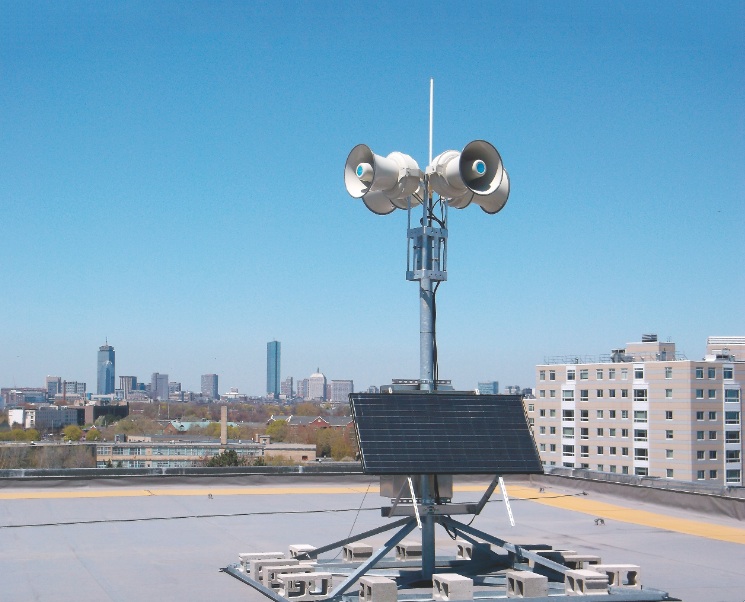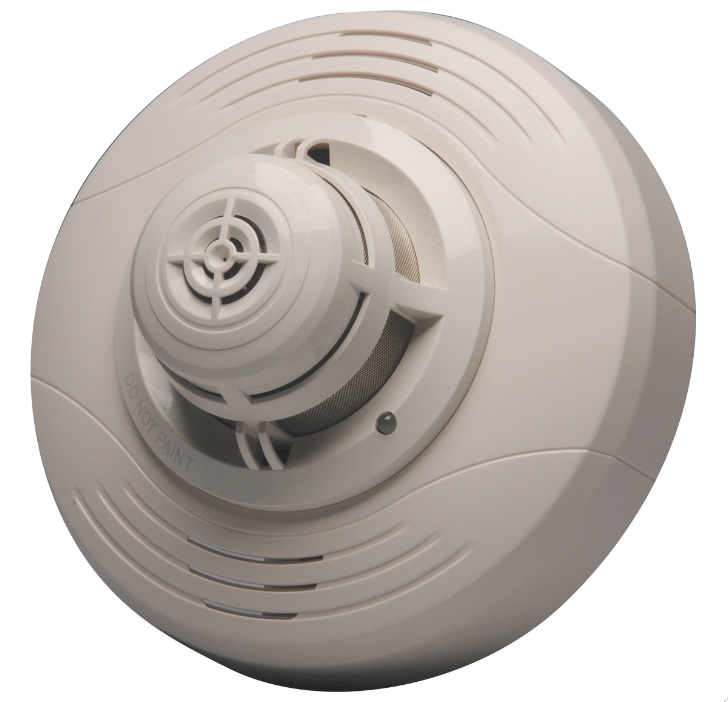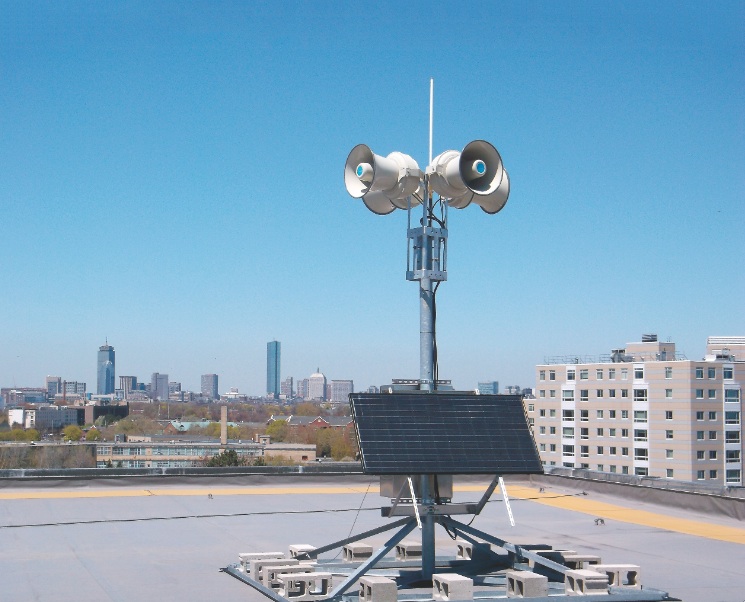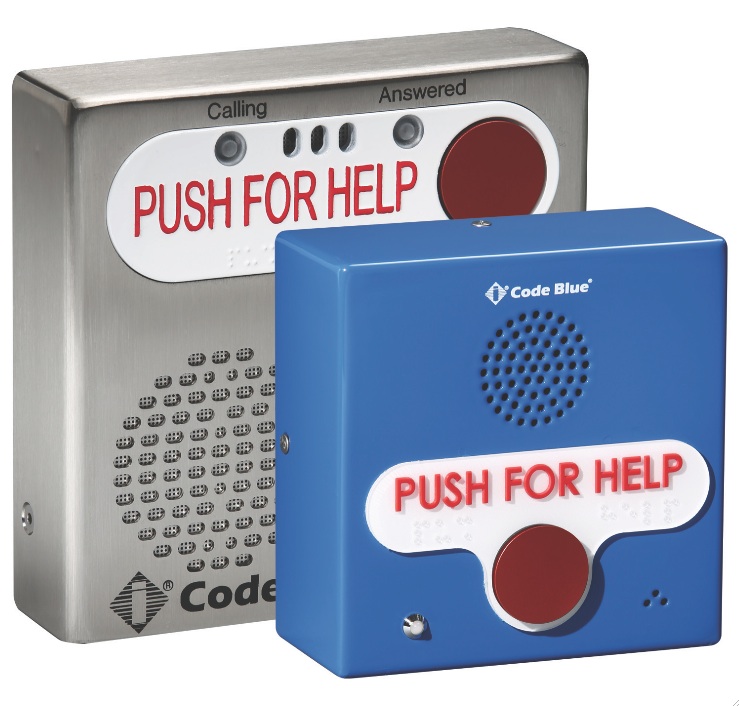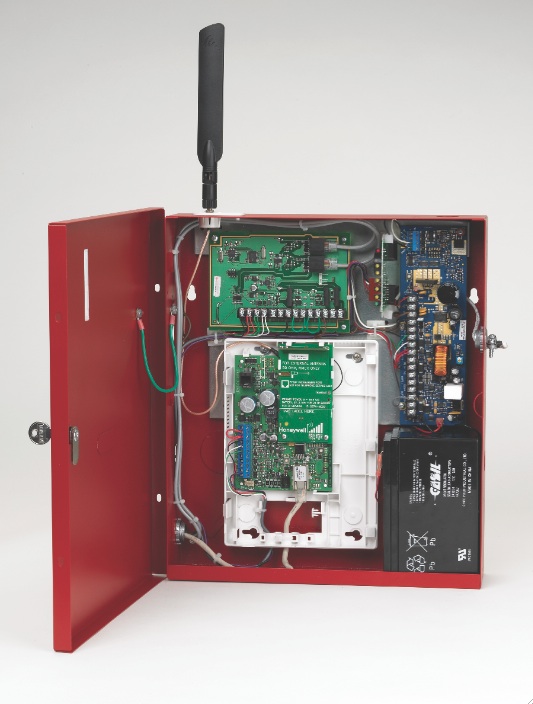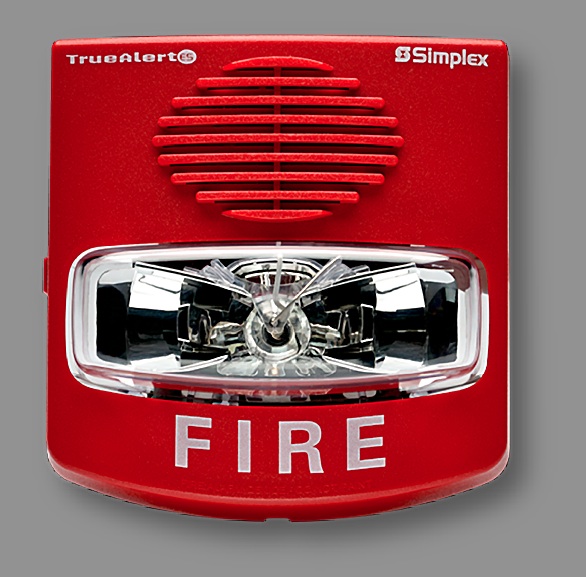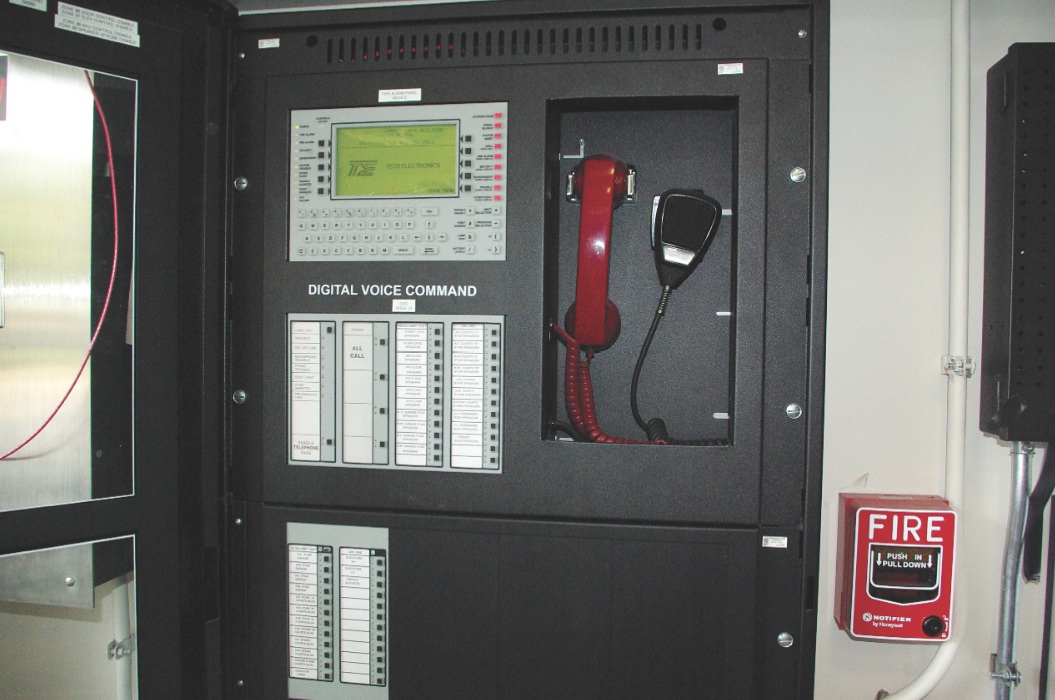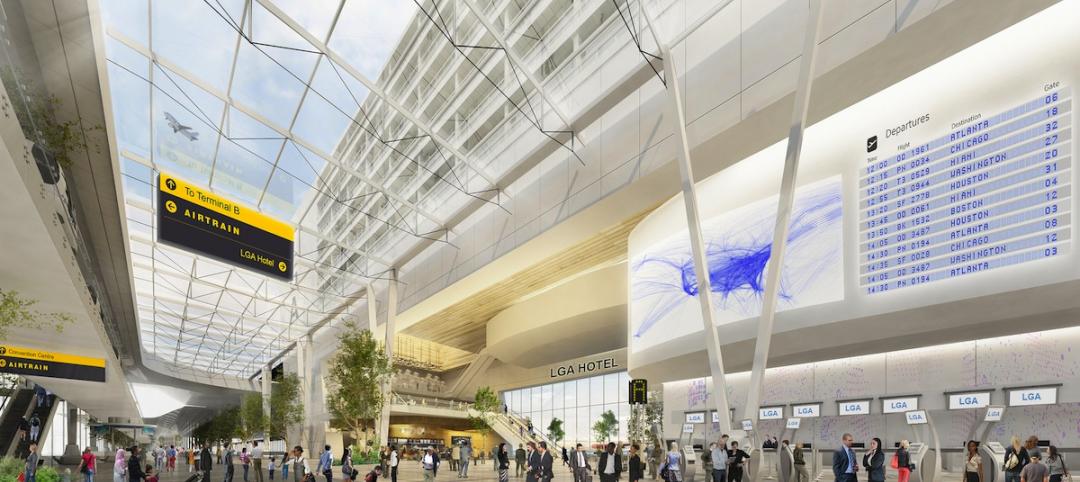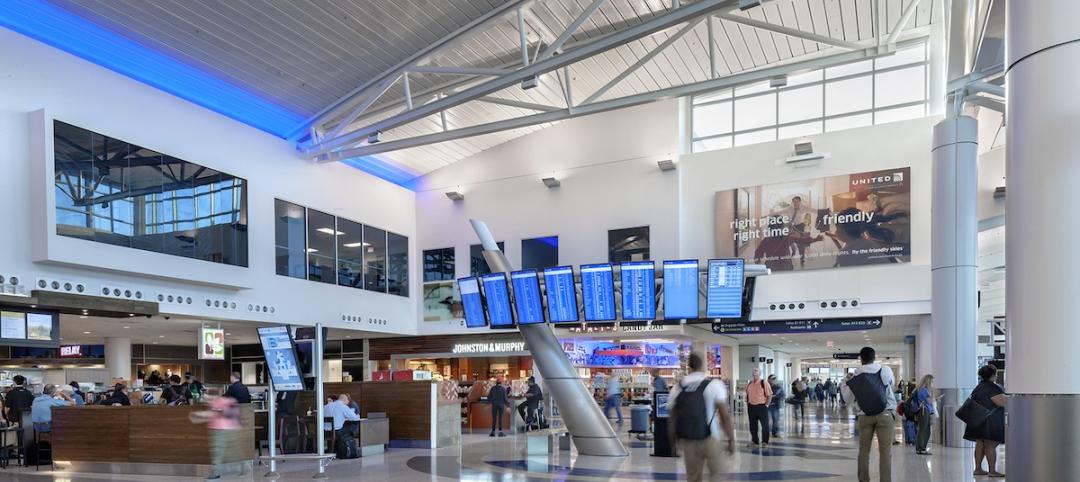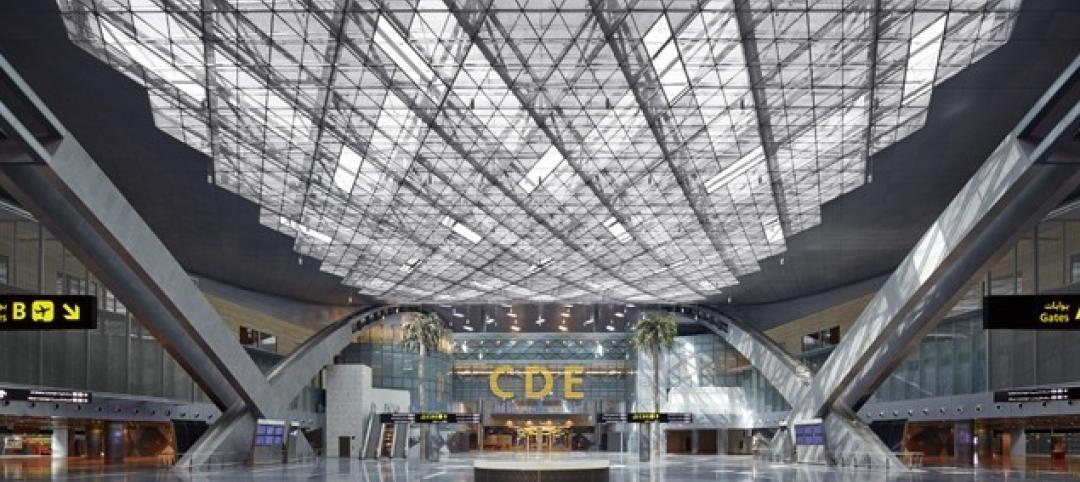From a dual fire-CO detector to an aspiration-sensing fire alarm, BD+C editors present a roundup of new fire and life safety products and technologies.
CRITICAL CYBER FACILITY PROTECTED WITH FAAST DETECTION TECHNOLOGY
The Cyber Innovation Center, part of the National Cyber Research Park in Bossier City, La., provides 139,000 sf of facilities to support users in the government, industry, private research, and academic sectors. The goal: accelerate technology transfer and improve workforce development. A recent installation by Fire Tech Systems combined a pre-action sprinkler system and System Sensor’s FAAST (fire alarm aspiration sensing technology) equipment to allow extremely early detection. The sprinkler system has a double interlock, requiring smoke to trip the detectors and charge the pipes with water, plus heat to fuse at least one sprinkler head. Only then will water discharge. The equipment uses a high-sensitivity blue LED to detect incipient fire conditions and an infrared laser to detect nuisance particulate matter, reducing the number of false alarms. Fire Tech specified separate FAAST systems for hot aisles and cold aisles to accommodate the high airflow integral to the HVAC design. System Sensor
FIRE AND CARBON MONOXIDE DETECTOR ELIMINATES NEED FOR MULTIPLE DEVICES
The new Farenhyt IDP-Fire-CO detector senses both fire and carbon monoxide, eliminating the common use of multiple detectors, notification devices, monitor modules, and associated junction boxes. The detector meets new CO requirements for commercial sleeping occupancies that have been put in place by nearly 40 states, covering buildings such as hotels, college residences, healthcare facilities, and military housing. Areas near fossil-fuel-burning appliances, such as laundry and mechanical rooms and rooms with gas fireplaces, are also prime candidates for CO detection. The single-unit design includes the B200S sounder base, which delivers customized tones to differentiate between fire and CO alarm events. Four separate sensors look for smoke, CO, light/flame, and heat to identify events and help eliminate nuisance alarms. Silent Knight
AUDIBLE VOICE IS BASIS FOR CAMPUS ALERT SYSTEMS
ATI Systems designs solutions for campus emergency alerts based on clear, intelligible voice notification combined with strobes and LED signage. Tones and voice commands are designed for speed and reliability, and can be integrated with secondary notification methods such as emergency text messages, telephone alerts, and e-mail. Control centers may be stationary or mobile. The product line includes control stations running the manufacturer’s MassAlert software, communication control units, high-powered speaker stations (HPSS16, HPSS32, and MHPSS) combined with indoor and outdoor speaker units, and additional control units for integration of third-party systems. Acoustical analysis encompasses GIS mapping of potential sound coverage for clients’ campuses, aiding in speaker selection, orientation, and placement. ATI Systems
TWO-WAY SPEAKERPHONES RESIST WEATHER, VANDALS, AND UV DEGRADATION
Code Blue’s new VoIP emergency speakerphones, the IP1500 and IP2500, are designed as a cost-effective solution for settings such as hallways, stairwells, classrooms, parking garages, elevators, and entryways. Available as lightweight surface- or flush-mounted units that are vandal-, UV-, and weather-resistant, the speakerphones offer full duplex SIP functionality for clear sound for both caller and operator. Fault monitoring and self-reporting, a key aspect of UL 2017 certification, eliminate the burden of frequent maintenance checks. An auxiliary output can be used to trigger a light, door, or gate. The speakerphones are ADA compliant, FCC certified, and Cisco compatible. Code Blue
SCHOOL DISTRICT SAVES THOUSANDS BY SWITCHING TO IP ALARM COMMUNICATIONS
Until recently, the 144 buildings in the DeKalb County (Ga.) School District relied on a conventional, two-way, proprietary radio system for fire alarm communications. Changes in radio frequency requirements by the FCC led the district to seek an alternative to replacing all radio transmitters. Eventually officials decided to communicate alarm information over existing fiber IP lines using Fire-Lite Alarms’ Advanced IP Digital Alarm Communicator Transmitter, or IP-DACT. The new reporting system, which accommodates the district’s mix of equipment from multiple manufacturers, cost about half as much as upgrading the proprietary radio equipment would have cost. Connection testing frequency has been changed from once a day to every 30 to 90 seconds, and secure 512-bit encryption helps prevent spoofing. The district’s year-long upgrade process included sending staff to three-day training sessions conducted by the manufacturer to make sure they understood the capabilities of the new system. Fire-Lite Alarms
COMMUNICATOR OFFERS CHOICE: IP, 4G CELLULAR, OR BOTH
Honeywell Power’s IPGSM-4G fire alarm communications panel allows installers to select IP, GSM (cellular), or both for fire alarm reporting to a central station. The units are compatible with most brands of fire alarm control panels, connecting to both ports on the digital alarm communications transmitter (DACT). For maximum reliability, the manufacturer recommends configuration with IP communication over an Ethernet network as the primary system, using GSM as a backup. Units automatically select the best available cellular signal in the area, based on signal strength, to maintain life-safety communications. The IPGSM-4G may be mounted as far as 20 feet away from the fire alarm control panel, making it suitable for both new installations and retrofits. Honeywell Power
ALARM REVAMP PROTECTS PRICELESS FIRE MUSEUM COLLECTION
The nonprofit Fire Museum of Maryland, in Lutherville, houses an irreplaceable collection of antique fire apparatus, fire-fighting equipment, alarm systems, and more than 10,000 images and documents. During a recent expansion for a new visitor center, offices, and archives, the alarm system showed evidence of failure. Museum supporter Marty Smith, President/CEO of Alarm Tech Solutions, led an effort to replace the equipment with a Gamewell-FCI E3 Series fire alarm control panel and integral network graphic annunciator. Since the museum does not yet have funds for an automatic sprinkler system, Alarm Tech installed analog addressable spot smoke detectors in the display areas, and a FAAST (fire alarm aspiration sensing technology) system for the archives room, providing very early warning of smoke. Alarm Tech donated the CAD work, shop drawings, programming, testing, UL certification, and commissioning. Sunbelt Rentals and Freestate Electrical Construction also donated services. Gamewell-FCI
INTELLIGENT NOTIFICATION APPLIANCES LEVERAGE ADDRESSABLE TECHNOLOGY
SimplexGrinnell, a Tyco business, has introduced TrueAlert ES—a family of intelligent notification devices designed to be economical and easy to use. The ES, or eServices, notification encompasses Web-enabled addressable technology to warn occupants of fires or other emergencies. Devices continually report their status to a Simplex 4100ES fire alarm control panel, using a self-testing routine to send a pass-fail signal and alerting facilities staff when repair or maintenance is needed. Device information and test history are stored, and facility managers can generate reports for authorities having jurisdiction and other code-compliance officials. The appliances operate at low current draws using small-gauge, unshielded wiring, reducing installation costs and energy loads. SimplexGrinnell
ALARM UPGRADE IMPROVES SAFETY AT ST. LOUIS COUNTY JUSTICE FACILITY
The St. Louis County Courts Building, in Clayton, Mo., was erected in 1970—an era that required only very basic fire alarm systems. The county government had not updated the systems since that time, and false alarms frequently disrupted courtroom operations. A recent upgrade solved this problem and also helped the county meet the requirements of the Americans With Disabilities Act. Systems integrator and technology services company Tech Electronics selected a NOTIFIER voice alarm system that provides emergency warnings for severe weather, security events, and fire. Visual signaling devices, including strobe lights, meet disability code requirements. A floor-by-floor phasing plan allowed the project to proceed without disturbing courtroom activities. Tech Electronics / NOTIFIER
INTEGRATED COMMUNICATION SYSTEM IS TAILORED TO CAMPUS SECURITY NEEDS
Talkaphone offers a suite of solutions intended to meet campuses’ needs for emergency communication and mass notification. Components include WEBS Contact software and its associated communications module, allowing central control of outgoing notifications; WEBS wall-mounted call boxes, with bright beacons visible from great distances; VoIP emergency phones; emergency phone towers with area lighting platforms, able to handle two-way communication and to broadcast audio over wide areas; and gate-entry pedestals with call boxes and card readers. Components can be combined to provide security for academic buildings, offices, recreational facilities, outdoor pedestrian zones, and parking lots. Mass communications, two-way communications, lighting control, gate access, paging, and video surveillance are all accommodated. The company’s Eco Tower, a freestanding emergency phone tower, was honored as New Product of the Year for 2012 by Security Products magazine for its sustainable features. Talkaphone
Related Stories
Airports | Jul 28, 2015
Plans to make over New York’s aging LaGuardia Airport are revealed
The complete redesign, devised by a panel of experts, would unify terminals, relieve ground traffic congestion, and install state-of-the-art amenities.
Airports | Jul 22, 2015
MUST SEE: JFK airport taps Gensler to design terminal for animals
Pets can enjoy luxurious spa and grooming services before being transported directly to their flight from the terminal.
Airports | Jul 1, 2015
FIRST LOOK: JetBlue opens sprawling green rooftop at JFK International Airport
The 4,046-sf rooftop includes landscaped green spaces, seating for 50 people, 400-sf children’s play area, and a 400-sf dog-walk area.
Sponsored | Airports | Jun 5, 2015
Exposed glulam framework offers quiet complement to Jackson Hole airport’s mountain backdrop
A three-phase expansion and renovation, which began in 2009, nearly doubled the size of the aviation hub; the only one located in a national park
Airports | Apr 21, 2015
Trends driving airport construction
Upgrades to aviation infrastructure have not kept pace with the increase in airport traffic or even at a level sufficient to accommodate the life cycle of our many dated terminal facilities. Until now.
Airports | Feb 6, 2015
Zaha Hadid-designed terminal in Beijing will be world’s largest
The terminal will accommodate 45 million passengers per year, and will be a hub for both air and rail travel.
| Jan 2, 2015
Construction put in place enjoyed healthy gains in 2014
Construction consultant FMI foresees—with some caveats—continuing growth in the office, lodging, and manufacturing sectors. But funding uncertainties raise red flags in education and healthcare.
BIM and Information Technology | Dec 28, 2014
The Big Data revolution: How data-driven design is transforming project planning
There are literally hundreds of applications for deep analytics in planning and design projects, not to mention the many benefits for construction teams, building owners, and facility managers. We profile some early successful applications.
| Dec 28, 2014
AIA course: Enhancing interior comfort while improving overall building efficacy
Providing more comfortable conditions to building occupants has become a top priority in today’s interior designs. This course is worth 1.0 AIA LU/HSW.
| Dec 28, 2014
The future of airport terminal design: destination status, five-star amenities, stress-free travel
Taking a cue from the hospitality industry, airport executives are seeking to make their facilities feel more like destinations, writes HOK's Richard Gammon.


